#Verbesina
Text
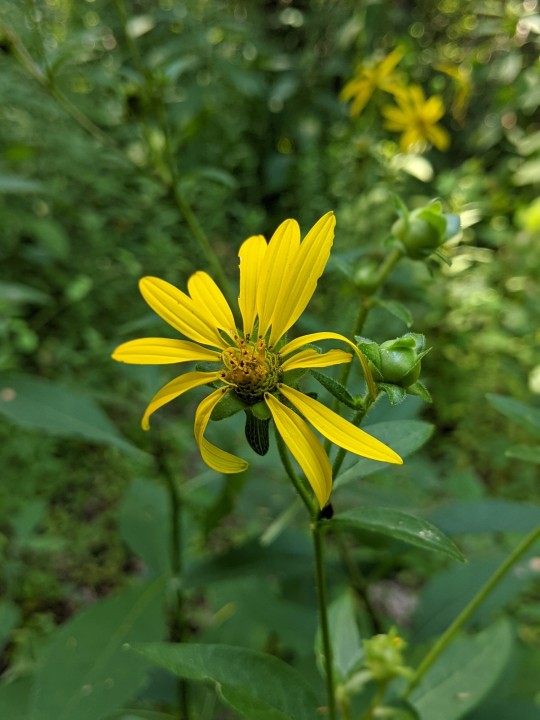

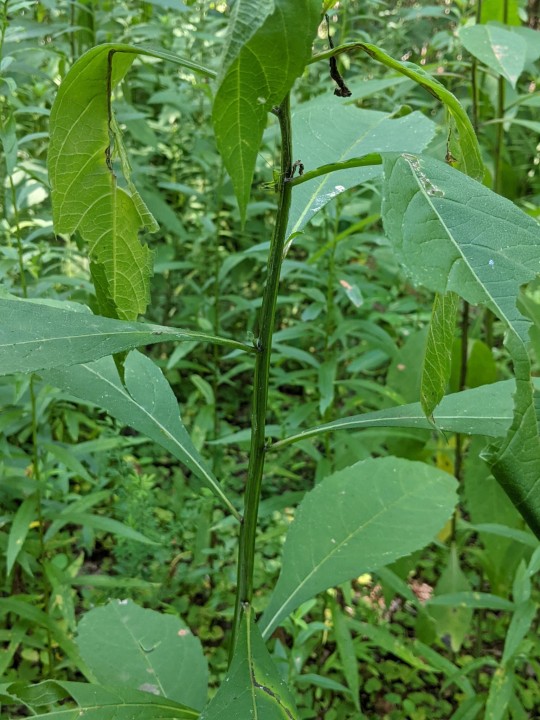
Wingstem, both kinds, growing right near each other as they not-infrequently do around here.
Verbesina occidentalis is the one in bloom, and the last pic shows just the leaves of V. alternifolia. The main difference between them is the leaf arrangement (opposite vs alternate), but alternifolia also blooms later & less showily.
#wildflowers#native plants#wingstem#aka#crownbeard#or at least one of them is#but they both have the winged stems so i like that common name for both#verbesina#verbesina alternifolia#verbesina occidentalis#plant id
9 notes
·
View notes
Text

Verbesina alternifolia / Wingstem at the Eno River State Park in Durham, NC
#Verbesina alternifolia#Verbesina#Wingstem#Yellow Ironweed#Native plants#Native flowers#Nature photography#photographers on tumblr#Flowers#Eno River State Park#Eno River#Durham#Durham NC#North Carolina
1 note
·
View note
Photo
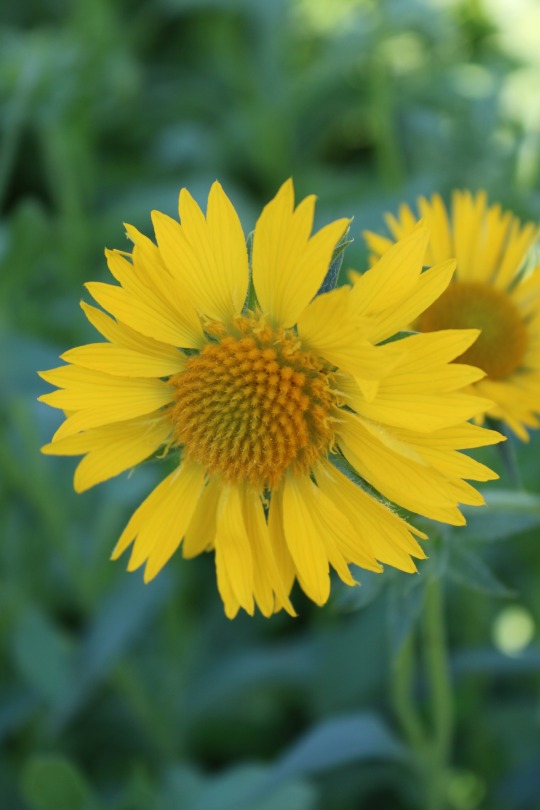
Golden Crownbeard (Verbesina Encelloides)
Toulouse, France
#photographers on tumblr#nature#flowers#yellow#floral#summer#flores#verano#amarillo#golden crownbeard#verbesina encelloides#gold weed#wild sunflower#vertical#original photographers#original photography#cowpen daisy#butter daisy#crown beard#american dogweed#south african daisy
164 notes
·
View notes
Text
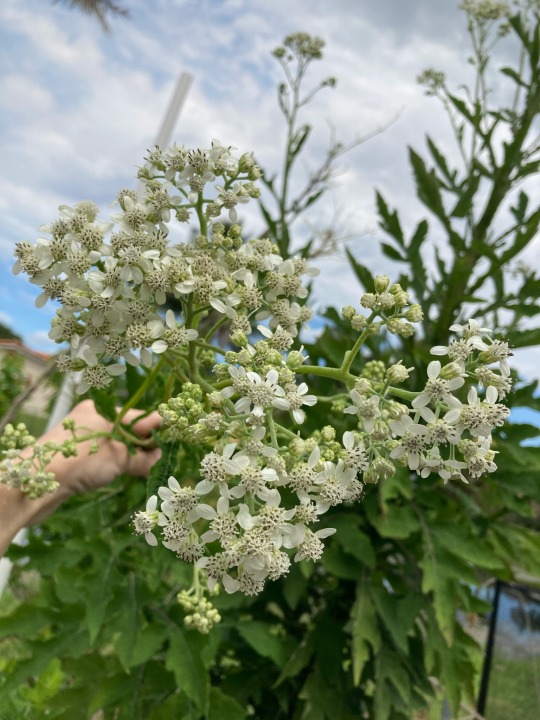


my frostweed, Verbesina virginica is blooming!!! its freakishly tall too. my plan was for it to be shaded by my dads moringa, but something keeps eating the moringa so it never makes much shade and also now the allegedly herbaceous frostweed is trying to out-tree the tree, despite supposedly staying shorter in full sun. i have NEVER seen one this big or even close
11 notes
·
View notes
Photo
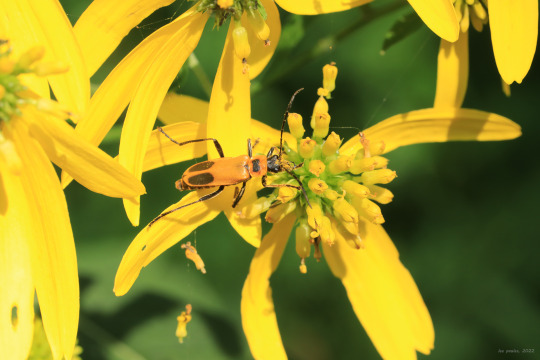
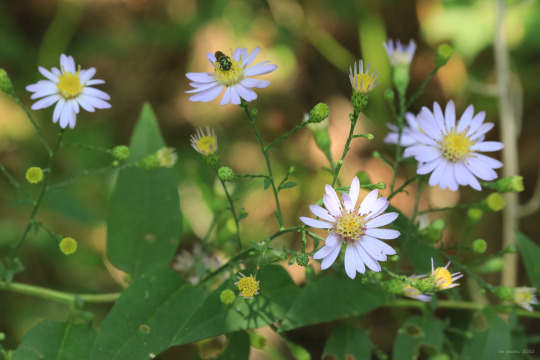

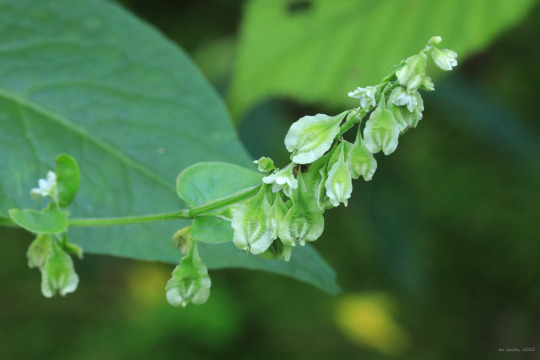

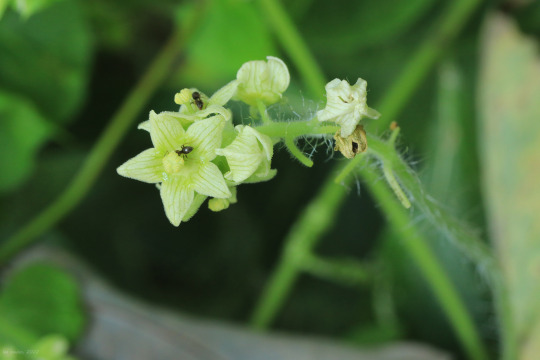




A few late summer odds and ends from a bike ride on the Mon River Trail yesterday. The asters are really starting to pop now as the days grow noticeably shorter and autumn closes in. A number of interesting vines are also in bloom and producing fruit for wildlife before the first frost. Climbing false buckwheat (Fallopia scandens) and oneseed bur cucumber (Sicyos angulatus), a member of the gourd family, are both aggressive twining vines with distinctive foliage, flowers, and fruits.
From top: a goldenrod soldier beetle strikes nectar gold on a wingstem flower (Verbesina alternifolia); Short’s aster (Symphyotrichum shortii), a really beautiful perennial often found growing in dry to mesic oak-hickory woods with limestone near the surface; climbing false buckwheat, a delicate twiner whose pendulous fruit has three ruffled sides, like pantaloons; oneseed bur cucumber, whose bristly fruit can cause painful stings; crooked-stemmed aster (Symphyotrichum prenanthoides), also known as zag-zag aster, whose stems often zig-zag between the nodes of its spatula-shaped leaves; and the glorious New England aster (Symphyotrichum novae-angliae), one of the most important pollinator plants of late summer and early autumn.
#appalachia#vandalia#west virginia#late summer#flora#wildflowers#mon river trail#verbesina alternifolia#wingstem#symphyotrichum shortii#short's aster#fallopia scandens#climbing false buckwheat#sicyos angulatus#oneseed bur cucumber#bur cucumber#symphyotrichum prenanthoides#crooked-stemmed aster#crooked-stem aster#zig-zag aster#symphyotrichum novae-angliae#new england aster
41 notes
·
View notes
Text

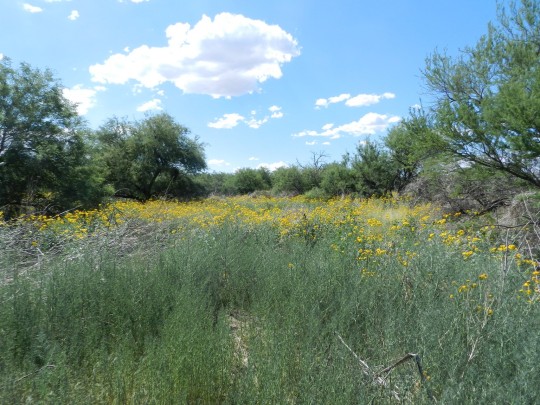
Cowpen Daisies - May 2023
Golden crownbeard, also known as cowpen daisy and officially as verbesina encelioides a a very hardy desert plant that blooms in mid to late May. There were isolated cowpen daisies all over the park, but on the road to the camping areas was a large field of them. Image one is a closeup of one of the blossoms. Image two is the whole field.
MWM
#arizona#tucson az#oro valley az#catalina mountains#catalina state park#golden crownbeard#cowpen daisy#verbesina encelioides
0 notes
Text
First Photos of 2023-Verbesina virginica (Frostweed/White Crownbeard)
Verbesina virginica (White Crownbeard/Frostweed) on 1-30-23, #928-1.
Hello everyone! I hope this post finds you well. I was in the process of writing descriptions for the Verbesina virginica (White Crownbeard/Frostweed, etc.) page Sunday evening and a thought came into my mind… I have been taking photos of this species since 2018 but had not ventured out in the cold to see if I could find any of…

View On WordPress
0 notes
Text


Ailanthus webworm moth (Atteva aurea) feeding on crownbeard (Verbesina sp.)
126 notes
·
View notes
Text

Frostweed (Verbesina virginica)
Taken at Turkey Creek Sanctuary in Palm Bay, FL
#frostweed#native florida plant#native florida plants#plant#plants#plant photography#flower#flowers#flower photography#wildflower#wildflowers#nature#nature photography#photography#florida#florida photograhy#florida photographer#turkey creek sanctuary#turkey creek#sanctuary#wildlife sanctuary#nature trail#nature trails#nikon camera#nikon photography#nikon d3500#Verbesina virginica
4 notes
·
View notes
Note
💐 you know who im asking for
*POINTING* WE GOT AN AUDREY STAN OVER HERE!!! PROPHETIC LESBIAN SLAY SO HARD SHE GOT SHOOTERS 14 YEARS BEFORE SHE WAS BORN!!!!!
Hrmmm I’ve never made a bouquet for anyone before I’m gonna look up some flowers native to the great lakes region.............
WELL. first of all Audrey is definitely a wildflower type gal. In my mind the colors for her is purple and white and black but I think the bouquet would also have to include some red, yellow and orange as well to symbolize maize (!) and her halo...

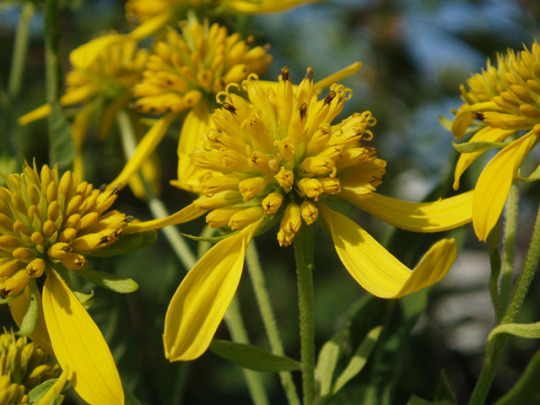
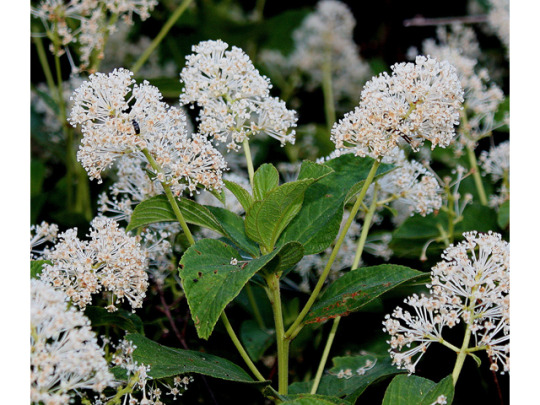
Agastache scrophulariifolia; Verbesina alternifolia; Ceanothus americanus

Old fashioned corn!! all the pure yellow stuff you see at grocery stores is genetically altered or carefully bred, this is what actual corn looks like :3 I think their various colors suit Audrey quite nicely. I don't know how someone could put corn in a bouquet but anything is possible through the power of love. Anyways. The maize/corn is here to show her connection to the land, and you know how the midwest is with their corn... There should also be some corn husk dolls thrown in there. aren't they ghostlike? aren't they organic? aren't they beautiful? That's what Audrey's all about, baby!!!
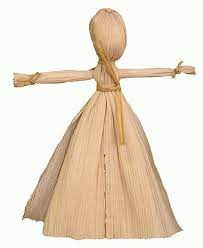
And that should do it!!!!!! Audrey would very much enjoy this bouquet if someone were to give it to her.
3 notes
·
View notes
Photo

Barbe blanche, une espèce de Verbesina également connu comme • Givre Nom botanique : Verbesina virginica Description La barbe blanche est une grande plante dont la floraison blanche tardive qui s'étend de la fin de l'été à la fin de l'automne fait le bonheur des abeilles et des papillons. En hiver, lorsqu'il fait très froid, ses tiges exsudent de l'eau qui se fige immédiatement en formes fascinantes appelées « fleurs de glace ». 🍀🌱 (à Bénin) https://www.instagram.com/p/CejZqNcMMYe/?igshid=NGJjMDIxMWI=
2 notes
·
View notes
Text
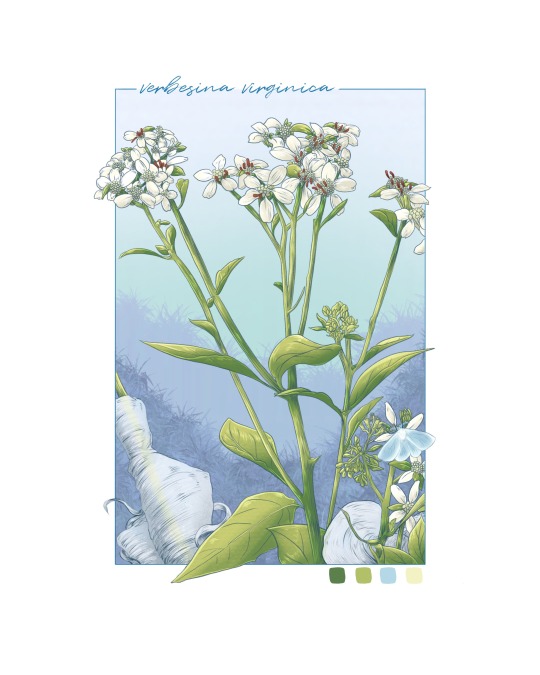
Inktober 2023 // Day 20: Frost
Verbesina virginica, also known as frostweed, is a species of flowering plant native to the Southeastern United States, where it is often found in bottomland thickets and edges of woods. It is a tall biennial species and produces heads of white flowers in late summer through fall. The name "frostweed" refers to its tendency to produce frost flowers in freezing weather.
Join my Patreon for lineart, .psd files, and hi-res images for download! If you're interested in following me for my art, consider following me on social media:
instagram | Deviantart | Patreon | Etsy | Facebook
#inktober#inktober 2023#inktober2023#digitober#drawlloween#illustration#art#artists on tumblr#plants#horticulture#nature#frost#frostweed#illustrator#illustrators on tumblr
0 notes
Photo
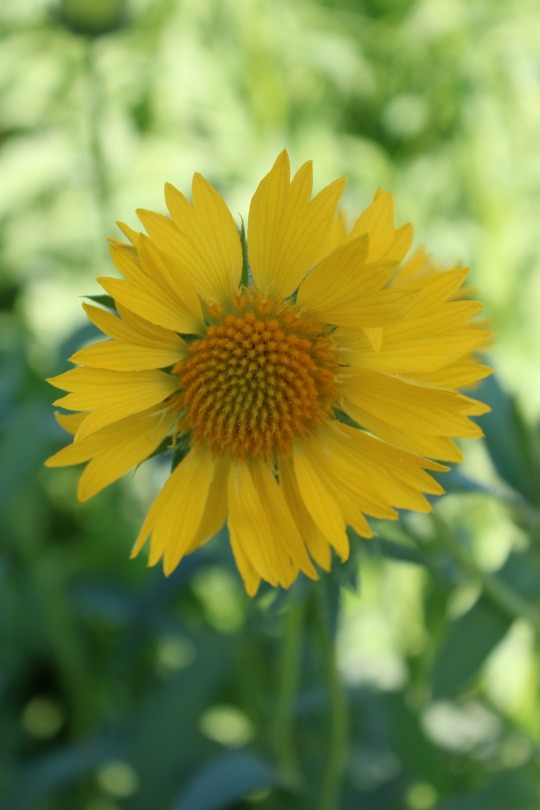
Golden Crownbeard (Verbesina Encelloides)
Toulouse, France
#photographers on tumblr#nature#flowers#yellow#floral#summer#flores#amarillo#verano#golden crownbeard#verbesina encelloides#gold weed#wild sunflower#vertical#original photographers#original photography#cowpen daisy#butter daisy#crown beard#american dogweed#south african daisy
168 notes
·
View notes
Text
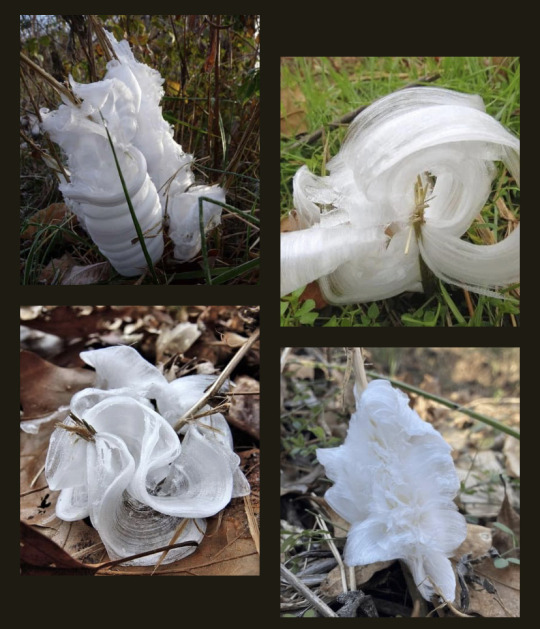
Frost Flowers- This Rare Natural Phenomenon Can be Seen All Over the South:
When freezing temperatures hit, it's easy to assume that the South's vibrant florals are long gone, withered away until winter ends. But you might want to think again. When temperatures drop, frost flowers—also known as ice flowers, ice fringes, ice filaments, and rabbit ice—come out to play. The rare "blooms" require freezing temperatures and a perfect storm of conditions to form, making them rather rare. But when they do appear, the incredible natural phenomenon is truly a sight to behold.
We'll let you in on a little secret: Frost flowers aren't actually flowers, or even made of plant material at all. They're brilliantly white sheets of ice crystal that fashion into feathery curls and ribbons when the weather is just right. i.e. The ground can't be frozen but the atmosphere must be below freezing.
In these conditions, water traveling up plant stems expands. The expansion can cause vertical splits in the plant stem, and when the water in the stems is exposed to freezing air, paper-thin layers of ice begin extruding through the newly formed slits. Like snowflakes, no two of these whimsical frost flowers is alike, and they're also extremely fleeting.
Your best chance to see one is early on a cold, still morning and look for a shady spot. A touch of sun easily melts these delicate formations, so once the sun is high, your spotting chances drop significantly. Plants that commonly form frost flowers are Verbesina alternifolia (yellow and purple ironweed or wingstem) and Verbesina virginica (white crownbeard or frostweed).
•From: https://www.southernliving.com/garden/winter/frost-flowers-gorgeous-natural-phenomenon
0 notes
Text

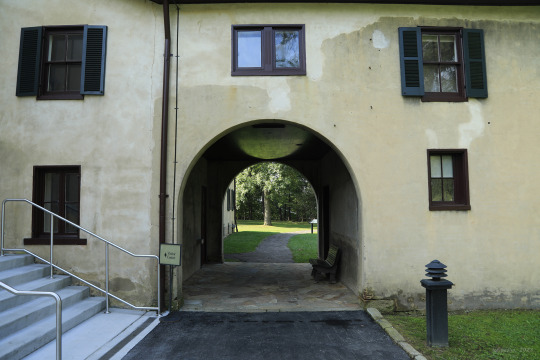
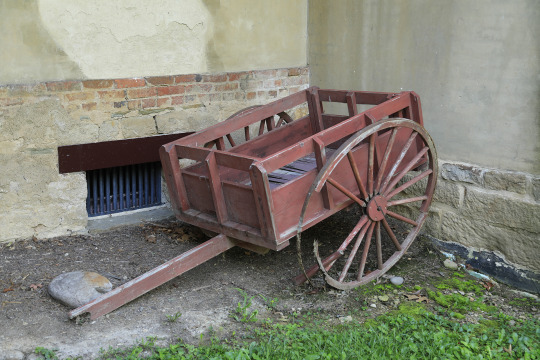


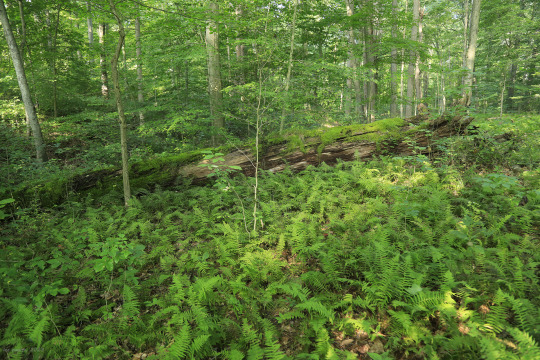

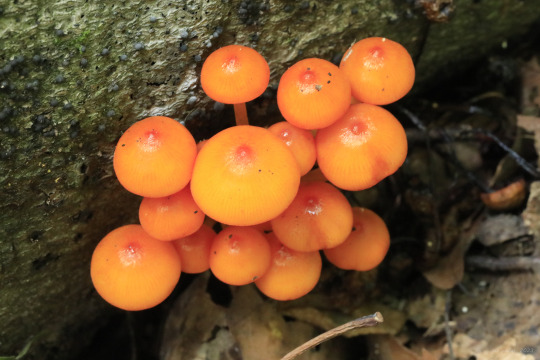
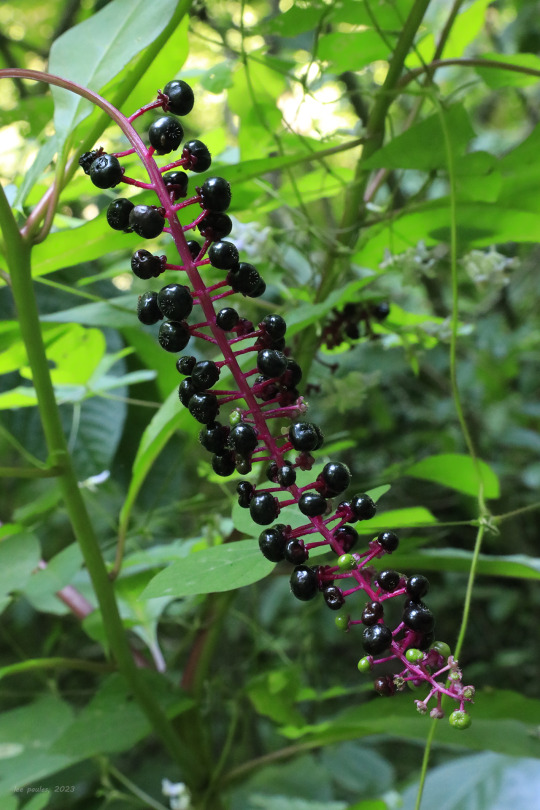
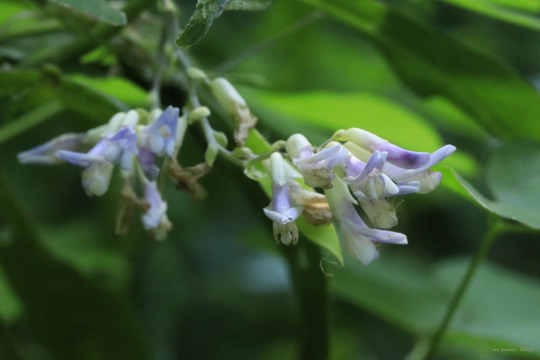

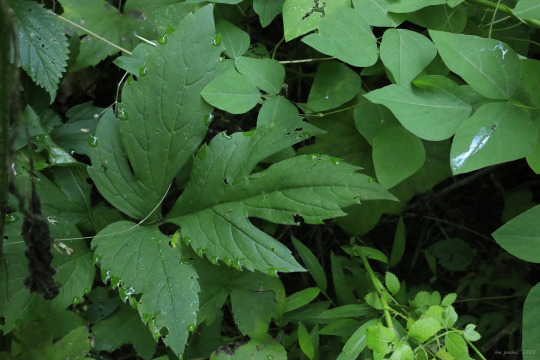
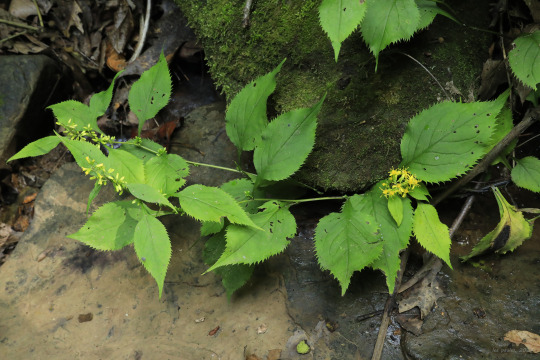
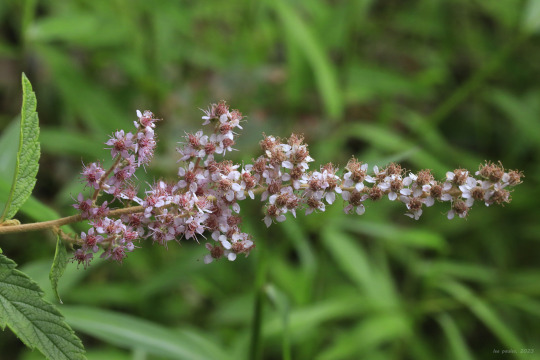
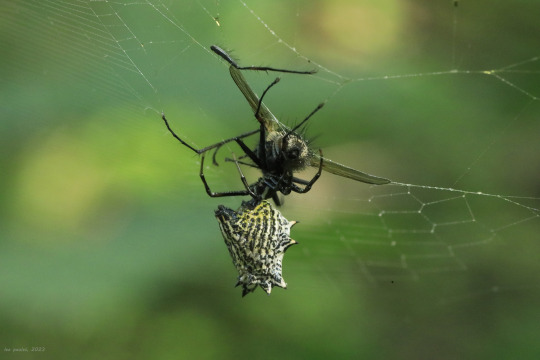

A few photos above from an early morning hike at the Friendship Hill National Historic Site near Pt. Marion, Pennsylvania. If you want to learn more about the history of this sprawling estate, you can go to this link or search for prior posts from the main search page of my Tumblr blog. In addition to the historic homestead of Albert Gallatin, the park features ten miles of hiking trails through verdant oak-hickory and riparian forests. This time of year, the Central Appalachian forest is rich with fungi, legumes, berries, and the loveliest orb-weavers imaginable.
From top: wingstem (Verbesina alternifolia), also known as yellow ironweed, a late summer aster so named because the petioles of its leaves run down the plant's stem; northern spicebush (Lindera benzoin), a gorgeous native shrub whose bright red berries in late summer are followed by the most extraordinary gold foliage in the fall; orange mycena (Mycena leaiana), a lovely, gregarious fungi of deciduous logs whose pigment has shown antibacterial and anti-cancer properties; the ripened but dangerously toxic berries of pokeweed (Phytolacca americana), whose young leaves are used by mountain folk to make poke sallet (but only after repeated cleansings to remove the toxins); American hog-peanut (Amphicarpaea bracteata), a lovely twining vine whose roots and ground nut are edible; cutleaf coneflower (Rudbeckia laciniata), also known as green-headed coneflower and wild goldenglow, a close relative of black-eyed Susan with gorgeous, pinnately-dissected leaves (the leaf photo also shows the characteristic tri-foliate leaf pattern of hog-peanut); zig-zag goldenrod (Solidago flexicaulis), one of two adorable woodland goldenrods that grow in this area (the other being blue-stemmed goldenrod), both of which produce clusters of brilliant yellow flowers in both their leaf axils and at the ends of their stems; steeplebush (Spiraea tomentosa), also known as hardhack, which produces delicate plumes of pink flowers in late summer; a spined micrathena (Micrathena gracilis), which has ensnared a fly in her web; and an arrowhead orb weaver (Verrucosa arenata), also known as a triangle orb-weaver, a sparkling gem of an arachnid that reels in its prey like a fisherman dragging in a net.
#appalachia#vandalia#wildflowers#flora#summer#arachnid#pennsylvania#friendship hill national historic site#fungi#orange mycena#wingstem#yellow ironweed#northern spicebush#pokeweed#american hog-peanut#cutleaf coneflower#green-headed coneflower#wild goldenglow#zig-zag goldenrod#steeplebush#hardhack#orb-weaver#spider#spined micrathena#arrowhead orb-weaver#triangle orb-weaver
23 notes
·
View notes
Photo
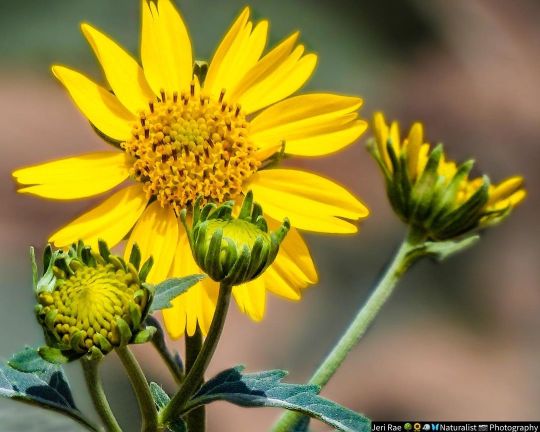
Golden Crownbeard Flowers (Verbesina encelioides) growing in an are where the roadside flora had been cut down 3 or so weeks ago. More about this flowering plant: “[Golden Crownbeard] (Verbesina encelioides) is a flowering plant in the family Asteraceae. The species is native to many parts of the United States and Mexico. It is naturalized in other parts of North America, the Middle East, Spain, Argentina, Australia and the Pacific islands. Common names include golden crownbeard, gold weed, wild sunflower, cowpen daisy, butter daisy, crown-beard, American dogweed and South African daisy. The species responds strongly to disturbances on suitable sites and retards the development of other local species. Research has identified an allelopathic effect on radishes which may explain its ability to dominate other species in some locations.” - Wikipedia #ScenesFromMyWalk #GoldenCrownbeard #GoldenCrownbeardFlower #VerbesinaEncelioides #CowpenDaisy #ButterDaisy #GoldWeed #WildSunflower #SunnyPlant (at Agua Fria, New Mexico) https://www.instagram.com/p/CnAjC-9v762/?igshid=NGJjMDIxMWI=
#scenesfrommywalk#goldencrownbeard#goldencrownbeardflower#verbesinaencelioides#cowpendaisy#butterdaisy#goldweed#wildsunflower#sunnyplant
0 notes